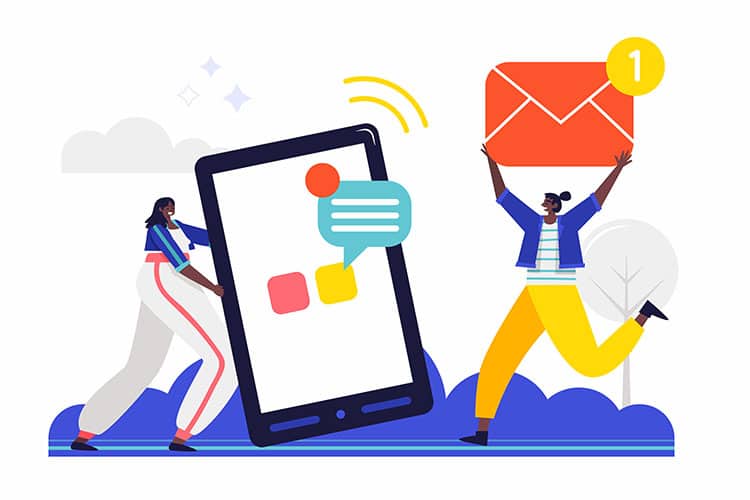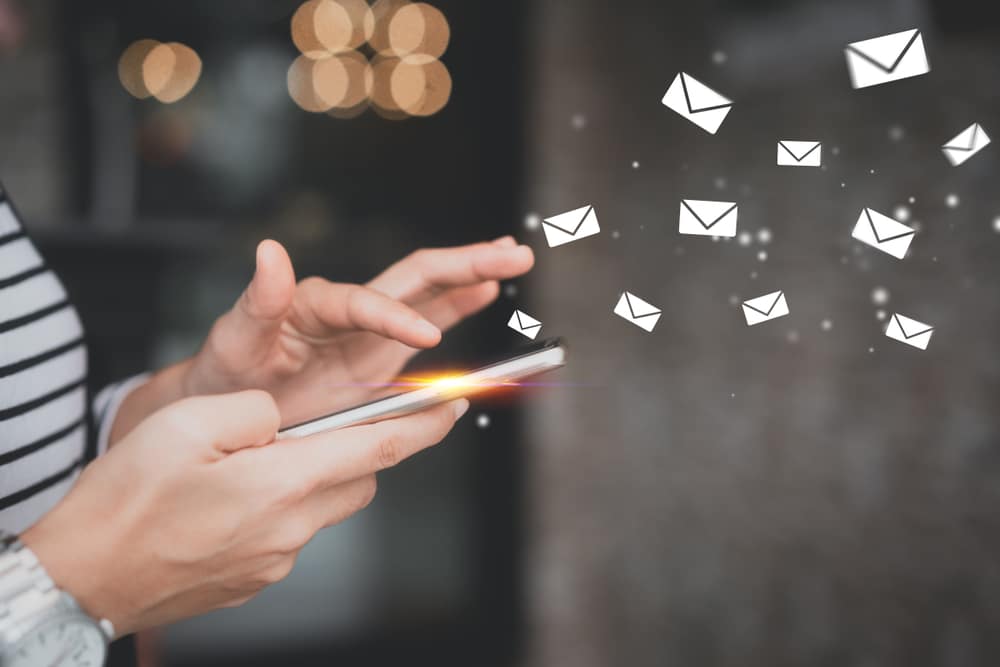Table of Contents
- Why send an email as a text message
- How to send email as a text message
- Tools and software for sending email as text message
- Best practices for sending email as a text message
- Examples of successful email-to-text campaigns
- Metrics to measure the success of email-to-text campaigns
- Challenges and limitations of sending email as a text message
- Conclusion and final thoughts
In today’s digital age, communication has become faster and more convenient. While email remains a popular tool for business and personal correspondence, there are times when sending an email may not be the most effective option. That’s where sending an email as a text message comes in. This complete guide will show you how to master the art of sending email as a text message, allowing you to communicate seamlessly and efficiently no matter the circumstances.
With step-by-step instructions and expert tips, you’ll learn how to convert your emails into text messages, ensuring they reach their intended recipients even without an internet connection. Whether you’re in a low signal area or simply prefer the simplicity of text messaging, this guide will equip you with all the knowledge and techniques you need to navigate this increasingly popular communication method.
Discover the advantages of sending email as a text message, such as instant delivery and greater accessibility, and explore the different tools and platforms that can make the process even easier. So why limit yourself to one form of communication when you can harness the power of both email and text messaging? Get ready to level up your messaging game and master sending email as a text message.
Why send an email as a text message
Sending email as a text message has several advantages, making it a valuable option in certain situations. One of the main reasons for sending email as a text message is its instant delivery. Unlike traditional email, which relies on an internet connection and may be subject to delays, text messages are typically delivered instantly, ensuring that your message reaches the recipient promptly.
Another benefit of sending email as a text message is the greater accessibility it provides. While most people have access to email, not everyone has a constant internet connection or a smartphone with email capabilities. By sending an email as a text message, you can reach individuals who may not have immediate access to their email accounts but are still able to receive and respond to text messages.
Additionally, sending an email as a text can be more convenient in certain situations. For example, if you’re in a low signal area or traveling in a remote location, text messages are often more reliable than email. They require less bandwidth and can be sent and received even with a weak or intermittent internet connection. This makes sending email as a text message a practical choice when traditional email communication is not feasible.
How to send email as a text message
Now that you understand the benefits of sending email as a text message let’s dive into the process itself. Converting an email into a text message is a straightforward process that can be accomplished using various methods. Here, we’ll outline a simple step-by-step process to help you get started.
- Compose your email: Begin by composing your email as you would normally. Craft your message, add any necessary attachments, and ensure you have included all the relevant information.
- Choose a conversion method: Next, decide on how to convert your email into a text message. Several options include email-to-text services, software applications, and even manual conversion using your phone’s messaging app.
- Enter the recipient’s phone number: Regardless of the conversion method, you must enter the recipient’s phone number. Ensure you have the correct number, as sending a text message to the wrong recipient can lead to confusion or privacy concerns.
- Convert and send: Once you have entered the recipient’s phone number, follow the instructions provided by your chosen conversion method to convert your email into a text message. This may involve copying and pasting the email content into a text message template or using a specific software application to facilitate the conversion process. Once the conversion is complete, simply send the text message as you would with any other message.
- Confirm delivery: After sending the email as a text message, confirming the delivery with the recipient is a good practice. This can help ensure your message is received and understood, especially if it contains important information or requires a response.
By following these steps, you can easily send email as a text message and enjoy the benefits of this communication method.
Tools and software for sending email as text message
While you can manually convert email into text messages using your phone’s messaging app, there are also various tools and software applications available to simplify the process. These tools offer additional features and functionalities that can enhance your experience when sending email as a text message. Let’s explore some of the popular options:
- Email-to-text services: There are several online services that specialize in converting emails into text messages. These services typically require you to sign up and provide your email and phone number information. Once set up, you can forward your emails to a specific email address associated with the service, and they will be automatically converted into text messages and sent to your designated phone number.
- Software applications: Many software applications are designed specifically for sending email as text messages. These applications often have user-friendly interfaces and provide additional features such as contact management, message scheduling, and delivery confirmation.
- Mobile carrier services: Some mobile carriers offer their own email-to-text services, allowing you to send and receive emails as text messages directly from your phone. Check with your mobile carrier to see if they provide this feature and how to set it up on your device.
When choosing a tool or software for sending email as a text message, consider factors such as ease of use, compatibility with your devices, and any additional features that may be beneficial to your specific needs. Take advantage of free trials or demos to test out different options before committing to a particular service.

Best practices for sending email as a text message
To ensure that your email-to-text messages are effective and well-received, it’s important to follow some best practices. These tips will help you optimize your communication and increase the chances of your messages being read and acted upon:
- Keep it concise: Text messages have character limits, so it’s important to keep your messages concise and to the point. Focus on the essential information and avoid unnecessary details. If you need to provide additional context, consider sending a follow-up email with more comprehensive information.
- Use clear and simple language: Text messages are read quickly, often on small screens, so it’s important to use clear and simple language. Avoid jargon or complex terminology that may cause confusion. Aim for clarity and brevity to ensure your message is easily understood.
- Include a call to action: To encourage a response or action from the recipient, include a clear call to action in your text message. Whether it’s asking for a confirmation, requesting a meeting, or providing instructions, a well-crafted call to action will increase the likelihood of the recipient taking the desired action.
- Respect privacy and opt-outs: When sending an email as a text message, it’s essential to respect the recipient’s privacy and provide an easy way for them to opt out of receiving future messages. Include clear instructions on unsubscribing or reply with “STOP” to discontinue receiving text messages.
- Test before sending: Before sending your email-to-text message to a large group of recipients, it’s advisable to test the process with a small group or yourself. This will allow you to ensure that the conversion and delivery functions are correct and that the message appears as intended.
By following these best practices, you can maximize the effectiveness of your email-to-text messages and improve your overall communication strategy.
Examples of successful email-to-text campaigns
To inspire your own email-to-text campaigns, let’s take a look at some successful examples from various industries:
- Retail promotions: Retailers often use email-to-text campaigns to notify customers about exclusive deals, flash sales, or limited-time offers. Retailers can drive immediate engagement and increase sales by sending a text message with a unique discount code or a link to a promotional landing page.
- Appointment reminders: Healthcare providers and service-based businesses frequently use email-to-text campaigns to send appointment reminders to their clients. By converting appointment confirmation emails into text messages, they ensure that clients receive timely reminders and reduce the risk of no-shows.
- Emergency notifications: Schools, workplaces, and government agencies use email-to-text campaigns to send emergency notifications to their employees or constituents. By converting email alerts into text messages, they can reach a wider audience quickly and provide critical information during emergencies.
These examples demonstrate the versatility and effectiveness of email-to-text campaigns across different industries. You can create impactful campaigns that yield positive results by tailoring your messages to your specific audience and objectives.
Metrics to measure the success of email-to-text campaigns
It’s important to track and analyze relevant metrics to evaluate the success of your email-to-text campaigns. Here are some key metrics to consider:
- Delivery rate: Measure the percentage of text messages successfully delivered to recipients. A high delivery rate indicates that your messages are reaching their intended audience.
- Open rate: Calculate the percentage of recipients who open the text messages. A higher open rate suggests your messages are compelling and engaging enough to be read.
- Click-through rate: If your text message includes a link, track the percentage of recipients who click on the link. This metric indicates the effectiveness of your call to action and the level of audience engagement.
- Conversion rate: Measure the percentage of recipients who take the desired action after receiving the text message. This could be making a purchase, confirming an appointment, or completing a form. A higher conversion rate signifies that your messages are driving the desired outcomes.
By monitoring these metrics, you can identify areas for improvement, refine your messaging strategy, and optimize your future email-to-text campaigns.

Challenges and limitations of sending email as a text message
While sending email as a text message offers numerous benefits, it’s important to be aware of the challenges and limitations associated with this communication method:
- Character limitations: Text messages typically have a character limit, which may require you to condense your message or send multiple messages if the content exceeds the limit. This can affect the readability and impact of your communication.
- Formatting constraints: Text messages do not support complex formatting, such as fonts, colors, or embedded images. This can limit your ability to convey visual information or brand identity effectively.
- Cost considerations: Sending text messages may cost money, depending on your mobile carrier or the email-to-text service you use. Considering these costs is important, especially when sending messages in bulk or to many recipients.
- Delivery reliability: While text messages are generally more reliable than email regarding instant delivery, there can still be instances of delayed or failed message delivery. Factors such as network congestion or technical issues can affect the reliability of the delivery.
Despite these challenges, sending email as a text message remains a valuable communication method in various scenarios. You can leverage this method effectively by understanding the limitations and planning accordingly.
Conclusion and final thoughts
In conclusion, mastering the art of sending email as a text message opens up new possibilities for efficient and effective communication. The instant delivery, greater accessibility, and convenience of text messaging can complement traditional email communication, allowing you to reach your audience seamlessly.
By following the step-by-step process, utilizing tools and software, and implementing best practices, you can harness the power of email-to-text messaging. Whether promoting a retail offer, sending appointment reminders, or delivering emergency notifications, email-to-text campaigns can help you engage your audience and drive desired outcomes.
Remember to measure the success of your campaigns using relevant metrics, and be aware of the challenges and limitations associated with sending email as a text message. With practice and experimentation, you can refine your approach and become a master of this increasingly popular communication method.
So, why limit yourself to one form of communication when you can leverage the power of both email and text messaging? Get ready to level up your messaging game and embrace the art of sending email as a text message.






